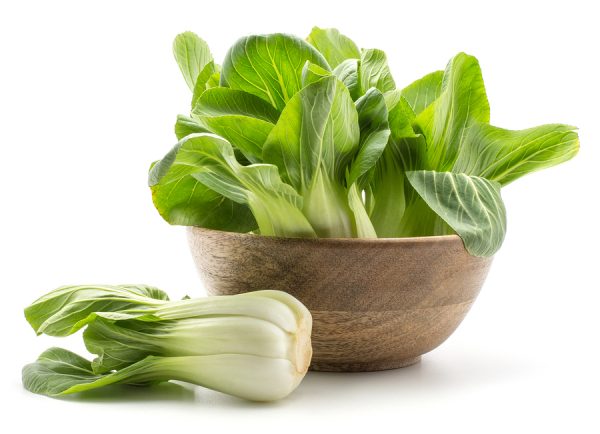Do you love collard greens, turnips, kale, broccoli, or brussels sprouts? Bok choy, or pak choi, is a delicious leafy vegetable in the same family as all those delicious veggies! You can find bok choy growing in October through June in Georgia.
Bok choy is packed with vitamin K
Did you know that bok choy is an excellent source of vitamin K? One cup of bok choy provides about 30%[1] of an adults’ daily vitamin K needs. [2] Vitamin K helps the body clot blood. Clotting helps prevent excessive bleeding when, say, you accidentally cut your finger. Vitamin K may also help with bone and heart health, though more evidence is needed to confirm this.2
How to prepare bok choy
Both the green leaves and white stalks of bok choy can be eaten. Bok choy can be cut up into smaller pieces or eaten with the leaf and stalk still connected. To cook bok choy, you can
- Steam it
- Boil it
- Add it to a stir fry
You can also eat it raw. Don’t forget to separate each leaf and stalk to wash away any leftover dirt before eating it.
Originally grown in China, bok choy pairs well with Asian inspired flavors, such as low-sodium soy sauce or ginger. We substituted cabbage with bok choy in this quick and tasty stir-fry recipe. Try it and tell us what you think!
Tasty bok choy stir-fry recipe
Ingredients
- 1 pound of fresh bok choy
- 1 bell pepper, diced (if desired)
- 1 onion, diced
- 1 tablespoon cooking oil
- 1⁄2 teaspoon garlic powder
- 1⁄3 cup water
- 1⁄2 teaspoon salt
- 1⁄4 teaspoon black pepper
Instructions
- Peel off each bok choy leaf and stalk and wash it. Cut up the bok choy, pepper, and onion. Mix in a bowl.
- Heat oil in frying pan. Add the bok choy mixture and stir-fry for 1-2 minutes.
- Add garlic powder and water. Cover pan.
- When water comes to a boil, turn down heat and simmer for 5 minutes. Add salt and black pepper. Stir and enjoy!
Written by Taylor Newman, Ph.D. Candidate | Edited by Laurel Sanville, MS, RDN, LD
[2] National Institute of Health


